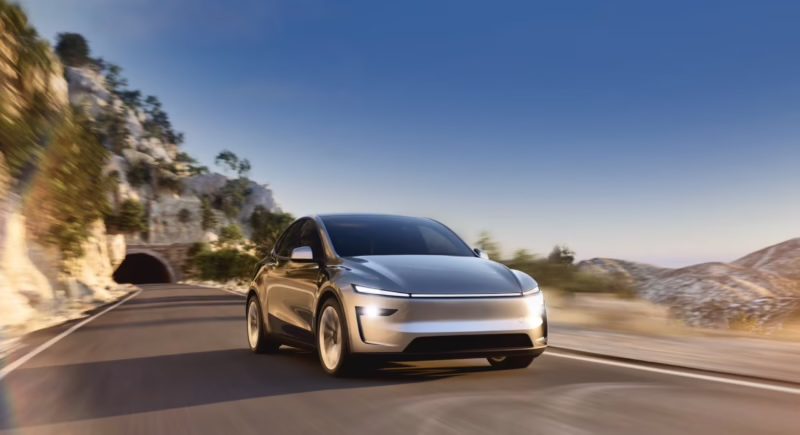Electric vehicles (EVs) accounted for one in four new cars sold in the United Kingdom in June, and nearly one in five in Germany, but it’s not Tesla that is driving this growth.
The latest data from the UK’s and Germany’s automotive associations – always a little behind the rest of Europe, given the size of each market – shows that battery electric vehicles (BEVs) continue to increase their market share, though at speeds below that needed to meet mandated levels.
In the UK, according to the Society of Motor Manufacturers & Traders (SMMT), registrations of BEVs rose steadily in June, up 39.1 per cent over the same month a year earlier and accounted for a market share of 24.8 per cent, well up on the 19 per cent market share recorded in June 2024.
Across the first six months of the year, a total of 224,841 new BEVs landed on UK roads, up 34.6 per cent on the same period a year earlier, and accounting for a 21.6 per cent market share.
However, the SMMT points out that this is still “significantly behind” the 28 per cent mandated by the UK government for 2025. Further, even achieving this level of market share required discounts estimated to total £6.5 billion over the last 18 months, which works out to around $A13.5 million.
“A second consecutive month of growth for the new car market is good news, as is the positive performance of EVs,” said Mike Hawes, SMMT chief executive.
“That EV growth, however, is still being driven by substantial industry support with manufacturers using every channel and unsustainable discounting to drive activity, yet it remains below mandated levels.
“As we have seen in other countries, government incentives can supercharge the market transition, without which the climate change ambitions we all share will be under threat.”
Plug-in hybrid EVs (PHEVs) also saw growth in June, up 28.8 per cent to 21,382 in June with an 11.2 per cent market share, and up 31.3 per cent over the first six months of 2025 to 107,039, claiming a market share of 10.3 per cent.
Across the North Sea in Germany, the country’s Federal Motor Transport Authority, also published their latest monthly data, showing a total of 47,163 new BEVs were registered in June, according to the equating to an increase of 8.6 per cent over the same month in 2024 and claiming a market share of 18.4 per cent, almost one in five.
Sales of BEVs across the first half of 2025 saw an increase of 35.1 per cent compared to the same period in 2024, ending the first six months with a market share of 17.7 per cent.
PHEVs saw a 66.4 per cent increase in registrations in June, up to 25,608, and accounting for a 10 per cent market share.
These numbers represent important growth in Germany but considering that new BEVs sold in 2024 fell by 27 per cent, reaching only 1.65 million for the year, any growth is good growth, but still leaves the country flailing to meet its goal of putting 15 million BEVs on the country’s roads by 2030.
Interestingly, American EV maker Tesla saw some return to form in the UK, but a continued decline in popularity in Germany, where CEO Elon Musk’s support of the far-right AdF party has not been well received.
The SMMT provides limited data regarding model sales but shows that Tesla’s market share increased by 14 per cent in the UK in June, with a total of 7,719 models sold through the month.
Interestingly, compared to May – when the company didn’t make the top 10 models sold at all – Tesla had a much stronger June, with both the Tesla Model Y (4,181) and Model 3 (3,538) featuring in the top 10.
According to the KBA, which provides even less granulated data, sales of Tesla continued to plummet, with only 1,860 models sold in June, down 60 per cent compared to June 2024, and pushing the total numbers sold so far this year to 8,890, down 58.2 per cent compared to the same period in 2024.
Joshua S. Hill is a Melbourne-based journalist who has been writing about climate change, clean technology, and electric vehicles for over 15 years. He has been reporting on electric vehicles and clean technologies for Renew Economy and The Driven since 2012. His preferred mode of transport is his feet.

